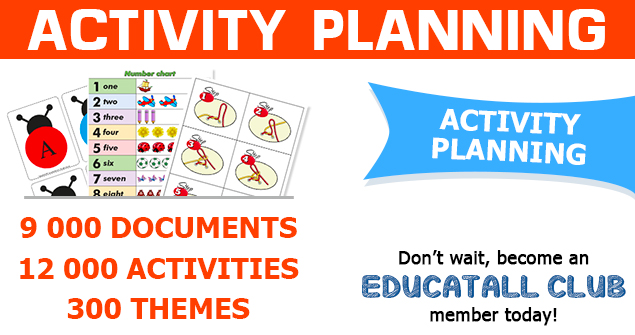
Protecting your back when you work in a nursery
I must admit that I haven't always been the best at adapting my activities to protect my back when working in the nursery. I once injured my back and couldn't work for two weeks. My injury required a chiropractic intervention as well as physical therapy to prevent future problems. That is how and why I learned to pay special attention to my back.
At the daycare centre where I work, management shared interesting information linked to the prevention of back injuries. Of course, applying these measures requires time and their application must be consistent.
Pay attention to your back during the following activities.
- Whenever you are helping children put their bibs or aprons on, avoid bending over while standing.
- If you must intervene with a child who is seated at a small child-sized table, avoid twisting and turning your body to reach him.
- Whenever you are helping a child who is sitting on the floor put his shoes on, avoid crouching down and rounding your back.
- Avoid picking children up in your arms for diaper changes, many different methods can be used to protect your back.
Positioning yourself at children's level can represent a good solution to avoid injuries. You can:
- Set one knee on the floor to position yourself at children's level.
- Sit on a very low bench with wheels to work at a child-sized table.
- Ask a child to sit in your lap for you to help him tie his shoelaces.
- Sit directly on the floor, with your back straight to help a child or play with him.
- Use a Ray-Lax chair to guarantee your back is straight when you are playing on the floor.
Large exercise balls
I love large exercise balls. Sitting on an exercise ball makes it possible to be at the same level as babies and toddlers who are playing on the floor or standing. Exercise balls make it easier to blow their nose, tie their bib behind their neck, etc. Exercise balls also make it easy to bend forward to pick up a child and then return to our starting position. This is useful for helping little ones put their shoes on or tie their shoelaces. What's more, exercise balls can be used by children for various activities throughout the day.
Sweeping toys away
One of my fellow early childhood educators would use a unique technique. She would keep a clean broom in her daycare and use it to sweep all the toys into one corner. She would then only have to bend down once to deposit all the toys in a nearby bin.
A baby or toddler who needs to be held
A sick child or a child who constantly wants to be held can represent a problem for your back. Instead of picking him up when you are in a standing position, sit on a chair, an exercise ball, or directly on the floor (with a Ray-Lax chair).
Rolling stools
The use of a rolling stool is ideal when you work with babies and toddlers. They can be used to be at children's level when they are seated in a high chair or to rub their back when they are in their crib. Rolling stools are often adjustable. They can therefore easily be raised or lowered to suit your needs. They can be quite expensive, but they still represent a wise purchase. Select a stool that has five wheels for greater stability.
Diaper changes
In a perfect world, select a changing table with retractable steps. You may also choose to change children's diapers directly on the floor if the establishment where you work accepts this method. Of course, you must keep disinfectants out of children's reach and respect hygiene rules.
Potty training
Set a stepping stool next to the toilet or potty so you can sit at children's level whenever they need to use the toilet or potty.
Accompanying children at naptime
Always remember to lower the rail when you are putting a child in his crib. Sometimes, we are in a hurry and cut corners, but that is precisely when accidents happen. If you must rub a child's back while he is in his crib, sit on a retractable stool. Avoid twisting and turning your body and be sure to keep your back straight.
Build children's autonomy to keep your back safe
Encourage babies and toddlers to participate in the execution of various tasks and routines. They can, for example, climb up on a chair on their own, pick things that have fallen up off the floor for you, lie down on the changing table or in their crib, or climb up into your lap.
Chantal Millette
Early childhood educator

 Home
Home Theme activities
Theme activities
 Babies and toddlers
Babies and toddlers
 Arts and crafts
Arts and crafts
 Science
Science
 Creative recipes
Creative recipes
 Tips and tricks
Tips and tricks
 Special needs
Special needs
 Extra activities
Extra activities
 Educ-TV
Educ-TV
 Newsletter
Newsletter  Online store
Online store Educatall club
Educatall club

